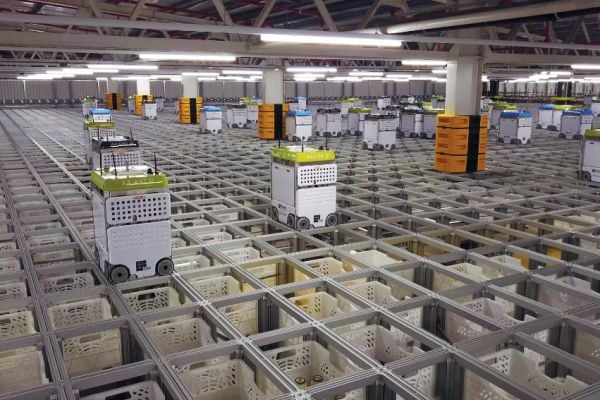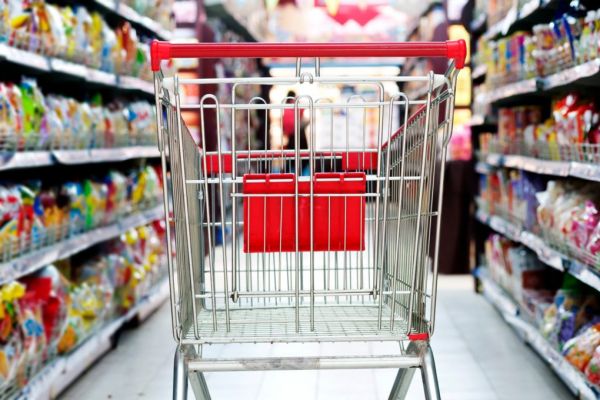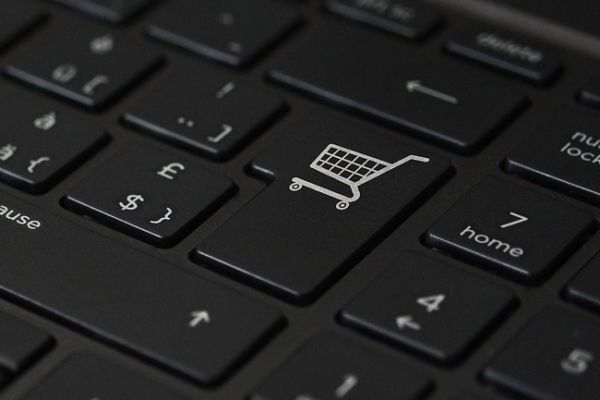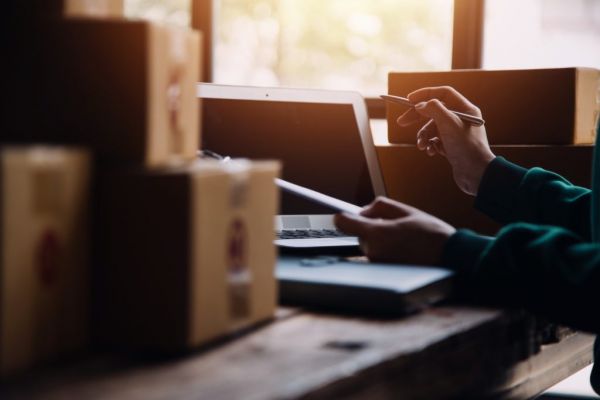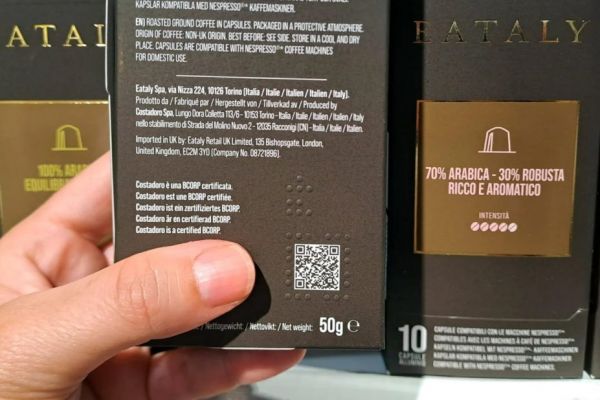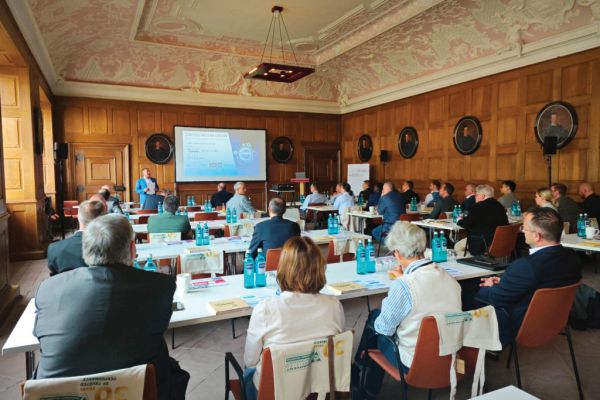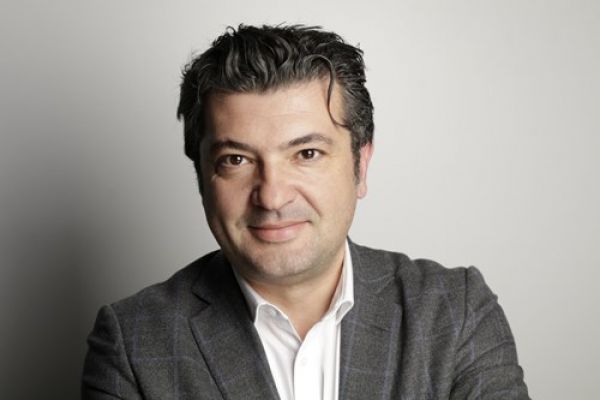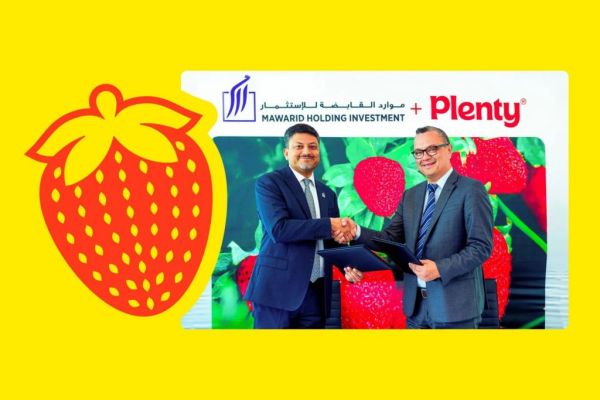Since its launch in 2014, Finnish local commerce platform Wolt’s journey has been one of expansion. From an original network of ten restaurants in Helsinki, the platform now works with operators in 29 countries around the world, with its services available in more than 500 cities and boasting 36 million registered users.
As consolidation trends in the quick-commerce and food delivery sector took hold, Wolt was acquired by its US counterpart, DoorDash, in 2022. Following the acquisition, DoorDash has retained the Wolt brand name as it expands into new markets.
As Wolt has grown, so retail has become more of an integral part of its operations. Aside from its work with restaurants and foodservice providers, the platform sells more than €1 billion worth of groceries a year, with its retail segment doubling between 2022 and 2023.
As well as working with major grocers such as Carrefour, SPAR, Billa, Kesko and 7-Eleven, Wolt runs its own network of dark stores, to facilitate greater availability.
Wolt recently launched a new advertising service, Wolt Ads, to increase the visibility of its network of merchant partners.
At the recent Shoptalk Europe event in Barcelona, ESM editor Stephen Wynne-Jones sat down with Wolt CEO Miki Kuusi to discuss the evolution of Wolt’s retail operations and how the company is seeking to win in the evolving European grocery market.
ESM: When it comes to online, people’s expectations are accelerating all the time, while, at the same time, they have less money to spend. So, you’re facing a situation where you have to continue to accelerate to meet customer expectations, and provide value and greater efficiency, all while dealing with increased costs. How does a company like Wolt navigate a situation like that?
Miki Kuusi: One central theme we talk a lot about at the company is affordability. Affordability is always important for consumers, but especially in a time like this, where you have a cost-of-living crisis, interest rates are higher than they’ve been in multiple decades, and there’s a lot of uncertainty – war, economic depression, and so forth. How you get to affordability is by being smart about how you provide the services that you’re offering.
There are many things we can do when we talk about the inputs of how we run our business and how we can run it more efficiently. It might be related to how we work with selection, how we make picking and packing as efficient as possible, the density of stores listed on the platform, how we do delivery, how we think about the distance of delivery, and how we organise things like customer support.
I think that, over time, if you look at what we know to be true today and what will also be true in ten years, people are going to want more selection, cheaper prices, a better quality of experience and more convenience.
Ultimately, all these are one-way streets. If you’re going the wrong way on one of these streets, you’re probably not going to win.
I think that’s the issue with a lot of these e-grocery players or online grocery players that we’ve seen recently – they didn’t have the fundamentals right.
It was alright when the business was small, but as the business started becoming bigger and bigger, the problems also became bigger and bigger, which means you need to change something. Usually, what happens is that it then costs more, takes longer, is less reliable, has less selection, and has a lower degree of availability. There are more defects, and the experience becomes worse. Through that, you’re not going to build a long-term, sustainable business.
We try to make sure that we are on top of each of the fundamentals and that they improve over time. Affordability is the key thing – that’s what drives your growth, customer retention, the frequency of experience, and the number of new people coming to the platform.
ESM: I want to get an idea of the timeline of Wolt’s investment in grocery because, in a way, you came late to the party. This obviously gave you the benefit of learning from others’ mistakes. When did grocery become part of the equation at Wolt?
Miki Kuusi: Grocery was part of the equation even before we founded Wolt. We always saw that the shift to online was going to impact all physical retail – restaurants, grocery stores, and so forth.
We saw that these physical stores would become online-offline stores, from a consumer perspective, as more people shifted some of their consumption to online because it’s more convenient. The faster and more reliable the delivery, the more convenience it adds. People are already on their phones, so it makes sense.
We figured, working backwards, that the restaurant industry would be where this would start because it has the highest underlying frequency.
Eating is something that people do every day, multiple times a day, and grocery is an important side of the coin, but we always thought that, rather than be the first to do these things, we would rather be the last to start doing them, and do it right. We recognised that this is not a rush to be first – it’s a rush to be last.
Everyone sees the opportunity, but making it happen is difficult.
It’s not difficult to get something going. It’s difficult to make something self-sustaining. That’s the hard part: achieving order density, developing technology, and building up the consumer and courier networks, building up cities one neighbourhood at a time, and getting to a level of order density where the business makes sense.
When we started working in grocery, we felt we were advanced enough in technology, order density, and operations for it to make sense to start layering in the next category.
We started working on grocery at a technology level in 2019. We had one store – what later became Wolt Market – and we started building the software. Our initial thesis was that we needed to build much more software for the grocery store than for the restaurant to make it work.
Restaurants have on-demand liquid inventory, and it’s usually fairly limited, but stores might have thousands of products, some with expiration dates. Consumers interact with the store in real time, meaning: inventory changes throughout the day. So, there’s a lot to understand.
Then in 2020, COVID happened. That was a natural turning point for us. We thought we were going to take our time, focusing on building technology for a year or two more – we might have experimented in one or a couple of cities – but then we decided to take everything we knew and start to do this virtually everywhere. We didn’t know if the restaurants would be allowed to stay open, and there was already a huge demand for grocery delivery.
ESM: When the pandemic happened, there was a huge acceleration and a huge amount of investment in quick-commerce operations. It was all about faster and faster delivery – ten-minute delivery, five-minute delivery, etc. You also drank the Kool-Aid, for want of a better phrase, and got in there, but what did you do differently? Others seemed like they were running, running, running, and then ultimately fell off a cliff, whereas you didn’t.
Miki Kuusi: I think there are two critical things. One is specific to our model, which started with logistics on behalf of restaurants for consumers primarily on a mobile device. This gave us a competitive advantage at the start of the pandemic, as we had been building our technology for six to seven years.
We started with restaurants, had a base of consumers, already had a brand, a network of couriers and order density happening on that network. In any mature city, we were achieving positive unit economics.
For us to layer in these grocery orders, even when we didn’t have everything figured out on Day One, was much more efficient. We didn’t end up spending vast amounts of money on inefficient consumer acquisition, inefficient unit economics, or rushing to get the technology to do what we needed because we had six years of building the technology behind us.
These advantages were unique to companies with a similar model. If you look at the pure-play grocery delivery online companies, most of them have disappeared, are on the verge of disappearing, or are getting consolidated. The players that are mostly left are like us – those who built on top of an existing restaurant delivery business, technology, consumer base, and so forth.
The second thing is that we started in a very difficult market for what we do. I would consider the Nordic market to be one of the most difficult geographies in the world for our business.
Coming from a market with one of the lowest income disparities in the world, we had to become very efficient through technology and operational set-up. We started in a market where distances are long, labour costs are high, there’s no tipping culture, and population density is low. We had to make this work, even in small cities with low population density.
When we expand to other countries, we often see that, although the average order value might be lower, labour costs are even lower, making it easier to operate this model. For example, in Germany, when people ask how we make it work, I say, “It looks like a Nordic country to me.”
This is specific to Wolt and, to some extent, DoorDash. DoorDash was an underdog in the US and had to succeed in an environment where they raised half a billion dollars while Uber had over $10 billion of capital. So, DoorDash also had to be smarter and more efficient in how they operated.
This need for efficiency is what has helped us succeed in grocery delivery, which is really difficult to do well.
ESM: Obviously, you’re very selective with the markets that you enter. You said that you had four new markets this past year – is that correct? And that brings you up to 35?
Miki Kuusi: No, we’re in 29 countries overall.
ESM: OK, so global domination is not on the agenda, but you are certainly looking to expand. How does that selection process work? You mentioned that it’s more about finding windows of opportunity, in terms of driving profitability, while other markets have a much broader opportunity, but, at the same time, you don’t want to just open in 50 markets and see where the dice fall, essentially.
Miki Kuusi: Obviously, as DoorDash is a publicly listed company, we report to the market about how the company is doing, and investors care not only about growth, but also profitability and the development of profitability.
We’re very mindful about how much it makes sense for us to invest overall when it comes to expansion and how we can ensure that whatever markets we’re expanding to, we’re able to allocate sufficient capital to grow those markets to scale. That’s what we think about when we consider expansion.
ESM: When you say ‘grow those markets to scale’, do you want to be the number-one or number-two player in every market that you go into? Is that where the target is?
Miki Kuusi: We care about being the best platform for consumers, merchants, and couriers. That’s the number-one thing we care about. Can we build the best service in the country? That tends to lead to ultimately getting to number one over time.
If you focus on outputs, you usually don’t get there. You need to focus on the inputs. No consumer cares about your market share. Consumers care about selection, affordability, quality, convenience, and how we solve problems for them – and that’s what we try to obsess over.
ESM: Consumers are fickle, too – there are other players, and they’re not afraid to shop around.
Miki Kuusi: What we always say is that GMV [gross merchandise volume] is not forever. In this business – trust me – just because you were able to build a sizeable business yesterday, it doesn’t mean that you’re going to have the same business tomorrow.
What is considered a world-class experience today, people will take for granted tomorrow. It’s not like you’re going to be sitting there tomorrow, thinking, What a great world-class experience I’m still getting! It’s more, This is the thing I’ve always got.
ESM: Algorithm transparency is very important for Wolt – it’s a fundamental core pillar. Why is it so important?
Miki Kuusi: What’s happening right now is an industrial revolution, where everything is going online. It’s very important that we, as consumers and citizens, but also as business owners, understand these platforms and the influence they have on our lives and what are the rules under which these operate.
If you’re a business, it’s important that you understand, Why am I getting consumers? or Why am I not getting consumers? What are the things I can do to succeed in this new age? And one of the things about online businesses is that these online models can get very complicated very quickly.
If you’re a small-business owner and you’re renting a space on the high street, you can kind of understand, on some fundamental level, what you’re signing up for. This is the rent, this is how many people pass by the place, these are the other shops and stores, and so forth.
Online, it’s not as clear, so I think it’s important that online platforms have this level of transparency that they share with societies. We are doing it voluntarily as a company because we think it’s the right thing to do, and we want to lead by example, but it’s also about demystifying what happens on platforms like ourselves [sic]. I think there are a lot of conspiracy theories about platforms like ours, and, certainly, some of it has been fuelled by what companies have done in the past – the bad experiences we’ve had as societies.
ESM: You recently launched Wolt Ads, which has two parts to it: Wolt Ads for brands, and Wolt Ads for merchants. How does this fit into what you’re doing?
Miki Kuusi: Many years ago, when we were just getting started, I remember talking to a small-restaurant owner in Helsinki. He told me that opening a new restaurant is a harsh experience. You start with a vision, you have a business case, you rent the space, you set up the brand, you come up with the cuisine – then you launch the restaurant.
Next, you might do a Facebook event, where you invite all your friends, you try to invite every journalist that you have an email address for, you organise a launch event, and the next day you put a sign outside of the restaurant, and you’re hoping people show up. You do all these things, and then there’s success or failure.
What happens between the two is kind of a black box. If I think about our advertising product, it’s ultimately trying to bridge that gap. It’s trying to bridge the gap of having a proposition and having consumers, and giving those merchants a fighting chance to be successful.
A big part of it is about helping new businesses find their clientele, giving brands the ability to basically pop out to say, “I’m here,” to get a chance to be found.
The businesses that succeed in the long term are the ones that get found by consumers, that consumers keep on coming back to. That’s what we want to make happen – help people discover new things, help brands get a fighting chance.
ESM: That sounds like quite an old-school approach, going back to the days when ‘word of mouth’ was all important, and digitising that – enabling businesses to grow organically, rather than trying to force it – but I guess it’s still hard to convince people …?
Miki Kuusi: I think people want to have convenience in their lives. Now, why isn’t everyone using online grocery when it’s so convenient? Because it’s very difficult to get it right. People have had years of bad experiences – 20 years of bad experiences.
All of us are masters at finding our things in a grocery store. How do you pick your tomatoes? What products do you want to buy? What are the brands you want? Do you really want to give that responsibility to someone else? You’ve been training for decades, several times a week, and now someone else is picking out your tomatoes.
It’s genuinely difficult to get it right, to do it well. In our case, most of our consumers started as restaurant consumers. Most of them are still not using us for groceries.
What we are doing is that we’re basically making the case, building the case, for people to also trust us with their other orders. They already trust us for the restaurant orders, and that goes back to the fundamentals. We don’t need to plaster the city with branding. We already have the consumers.
This is about helping us gain trust, and you only gain trust if you’re able to fulfil their needs at the level of convenience and quality, having the right selection, and having affordability.
ESM: Is Wolt’s non-restaurant business solely focused on grocery?
Miki Kuusi: Our main focus outside of restaurants is on grocery, but there are a lot of things that we have built that also help other categories of retail succeed.
Flowers are a fantastic example. Flower shops are something that really succeed on the platform. It’s a natural category for gifting and something you can order for yourself or someone else, and it doesn’t require a lot of product and technology on top of what we had already built for restaurants and grocers.
Similarly, everyday essential products, electronics products – even stockings, funnily enough – are big categories on our platform, things people need in their everyday life. All of these things you can find in a grocery store, but there are also specialty stores focused on these categories.
ESM: To finish, is there a target ceiling for Wolt over the next few years? Where do you want to be by 2030?
Miki Kuusi: I think people, decades in the future, are going to laugh that companies like us started as restaurant delivery companies, similar to how we laugh about Amazon starting as a bookstore or Facebook starting as a college dating app.
The point is that, in technology, you need to find something simple, where you provide value to a group of people and you build a great service for that group of people. With restaurant delivery, there was this magical use case of people needing to eat every day, restaurants being the biggest local service, and most restaurants not being available for delivery. The restaurant delivery experience had a wide range of prices, a wide range of delivery times, and a wide range of reliability.
By making the quality better, making affordability clearer, making the experience more reliable, quicker, and more transparent, you’re making it into something you can access with your mobile phone or a couple of taps. For restaurants, it was a magical product-market fit, but, at the same time, you now have the most efficient capability to deliver things from A to B quickly, reliably, and efficiently. It would be crazy to think that’s the only use for it.
Great to chat to @mikikuusi, CEO of @woltapp, at @shoptalk Europe in Barcelona today – a really interesting company! Keep an eye out for the full interview on the ESM website in the coming days. #interview #wolt #shoptalkeurope pic.twitter.com/tbBZJWVyZj
— Stephen Wynne-Jones (@StephenWynneJo1) 3 June 2024

